 W
WA small satellite, miniaturized satellite, or smallsat is a satellite of low mass and size, usually under 500 kg (1,100 lb). While all such satellites can be referred to as "small", different classifications are used to categorize them based on mass. Satellites can be built small to reduce the large economic cost of launch vehicles and the costs associated with construction. Miniature satellites, especially in large numbers, may be more useful than fewer, larger ones for some purposes – for example, gathering of scientific data and radio relay. Technical challenges in the construction of small satellites may include the lack of sufficient power storage or of room for a propulsion system.
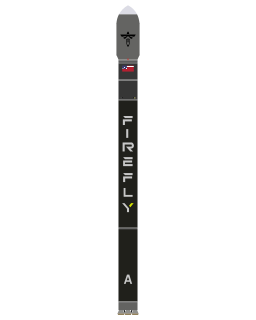 W
WFirefly Alpha is a two-stage orbital expendable launch vehicle developed by the American aerospace company Firefly Aerospace to cover the commercial small satellite launch market. Alpha is intended to provide launch options for both full vehicle and ride share customers.
 W
WThe Lambda 4S or L-4S was an experimental Japanese expendable carrier rocket. It was produced by Nissan and the Institute of Space and Astronautical Science and launched five times between 1966 and 1970 with Ohsumi technology demonstration satellites. The first four launches failed, however the fifth, launched on 11 February 1970, successfully placed Ohsumi-5, the first Japanese satellite, into orbit.
 W
WLauncherOne is a two-stage orbital launch vehicle developed and flown by Virgin Orbit that began operational flights in 2021, after being in development from 2007 to 2020. It is an air-launched rocket, designed to carry smallsat payloads of up to 300 kg (660 lb) into Sun-synchronous orbit (SSO), following air launch from a carrier aircraft at high altitude. The rocket is carried to the upper atmosphere on a modified Boeing 747-400, named Cosmic Girl, and released over the Pacific Ocean. Initial work on the program was done by Virgin Galactic, another Virgin Group subsidiary, before a separate entity— Virgin Orbit—was formed in 2017 to complete development and operate the launch service provider business as a separate entity from the passenger-carrying Virgin Galactic business.
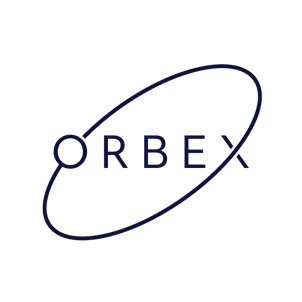 W
WOrbital Express Launch Ltd., or Orbex, is a UK-based aerospace company that is developing a small commercial orbital rocket called Prime. Orbex is headquartered in Forres, Moray, in Scotland and has subsidiaries in Denmark and Germany. Its future launch complex is proposed to be built on the A' Mhòine peninsula in the county of Sutherland, northern Scotland.
 W
WThe Qased rocket is an Iranian expendable small-capacity orbital space launch vehicle. It made its maiden flight in 2020, lofting Iran's first military satellite named Noor into orbit.
 W
WThe Satellite Launch Vehicle or SLV was a small-lift launch vehicle project started in the early 1970s by the Indian Space Research Organisation to develop the technology needed to launch satellites. SLV was intended to reach a height of 400 kilometres (250 mi) and carry a payload of 40 kg (88 lb). The first experimental flight of SLV-3, in August 1979, was a failure. The first successful launch took place on 18 July, 1980.
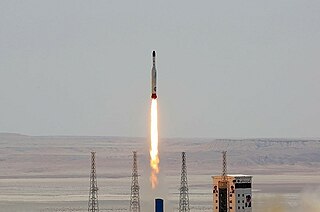 W
WSimorgh, also called Safir-2, is an Iranian expendable small-capacity orbital space launch vehicle,·The project was unveiled by Iranian President Mahmoud Ahmadinejad on 3 February 2010, as part of celebrations of the first anniversary of the launch of Omid, the first indigenously-launched Iranian satellite, and was launched for the first time on 19 April 2016.
 W
WSkyrora Ltd is a private space company based in the United Kingdom since 2017.
 W
WA small-lift launch vehicle is a rocket orbital launch vehicle that is capable of lifting up to 2,000 kg (4,400 lb) or up to 5,000 kilograms (11,000 lb) of payload into low Earth orbit (LEO). The next larger category consists of medium-lift launch vehicles.
 W
WSPARK, or Spaceborne Payload Assist Rocket - Kauai, also known as Super Strypi, is an American expendable launch system developed by the University of Hawaii, Sandia and Aerojet Rocketdyne. Designed to place miniaturized satellites into low Earth and sun-synchronous orbits, it is a derivative of the Strypi rocket which was developed in the 1960s in support of nuclear weapons testing. SPARK is being developed under the Low Earth Orbiting Nanosatellite Integrated Defense Autonomous System (LEONIDAS) program, funded by the Operationally Responsive Space Office of the United States Department of Defense.
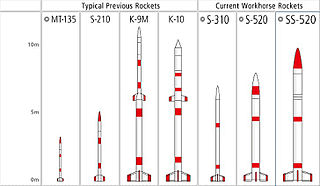 W
WS-Series is a fleet of sounding rockets funded by the Japan Aerospace Exploration Agency (JAXA) that have been in service since the late 1960s. Manufactured by IHI Aerospace and operated by the Institute of Space and Astronautical Science (ISAS). The nomenclature of the S-Series rockets is the number of "S"s indicates the number of stages, and the following number details the diameter of the craft in millimeters. For example, the S-310 is a single stage rocket with a diameter of 310 mm.
 W
WVector-H was a planned two-stage or three-stage orbital expendable launch vehicle in development by the American aerospace company Vector Launch to cover the commercial small satellite launch segment (CubeSats). It was planned to be an expanded version of the Vector-R rocket, more than doubling the payload capacity. After Vector Launch ceased operations in December 2019, the future development of the rocket is unofficially canceled.
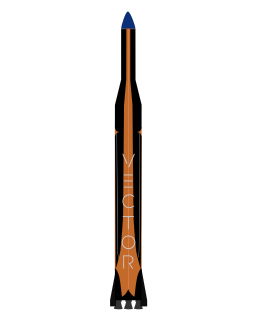 W
WVector-R is a two-stage orbital expendable launch vehicle under development by the American aerospace company Vector Launch to cover the commercial small satellite launch segment (CubeSats). Vector Launch went bankrupt in December 2019 and re-emerged in October 2020. Two prototypes were launched in 2017.
 W
WThe XCOR Lynx was a proposed suborbital horizontal-takeoff, horizontal-landing (HTHL), rocket-powered spaceplane that was under development by the California-based company XCOR Aerospace to compete in the emerging suborbital spaceflight market. The Lynx was intended to carry one pilot, a ticketed passenger, and/or a payload above 100 km altitude. The concept was under development since 2003, when a two-person suborbital spaceplane was announced under the name Xerus.